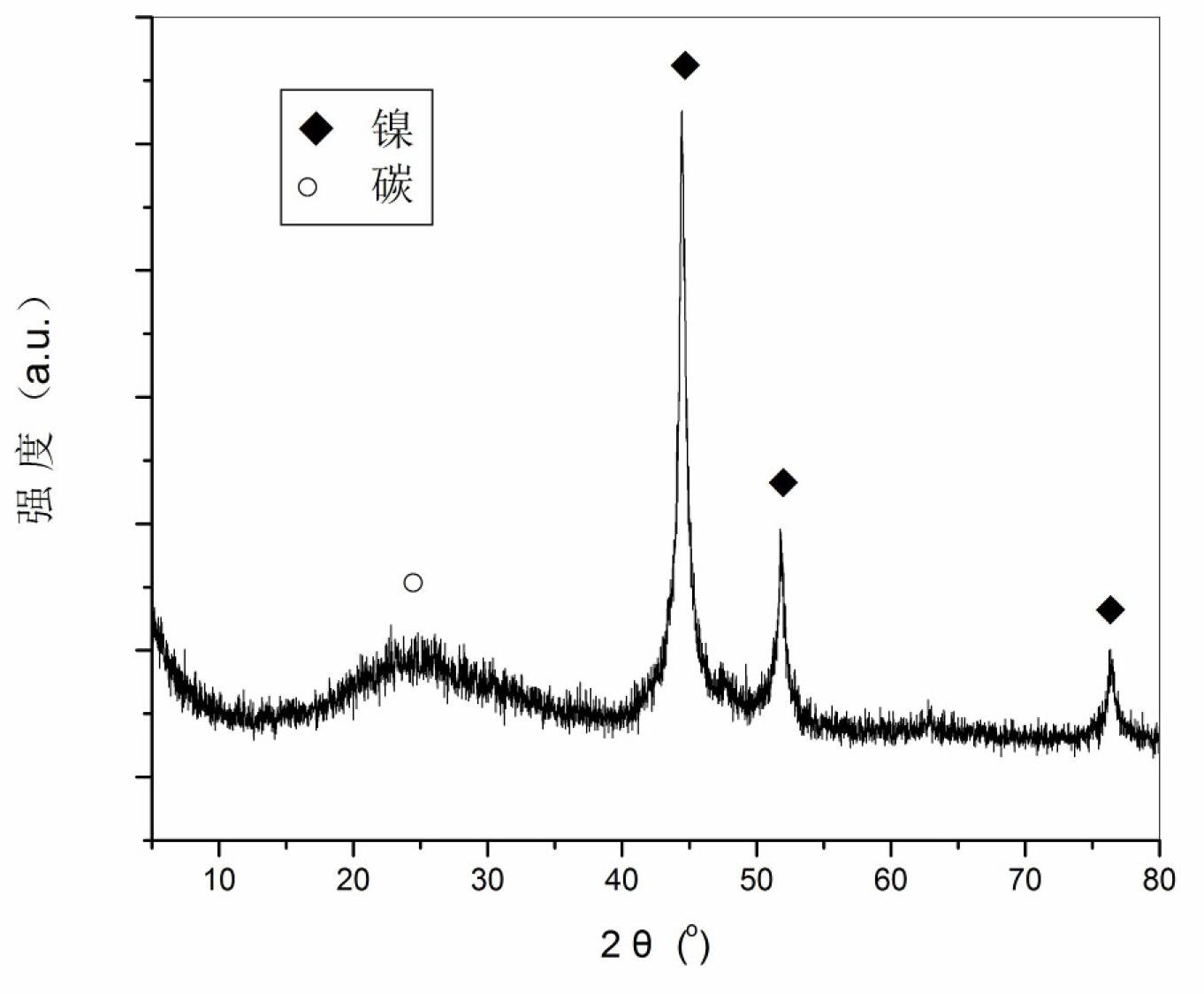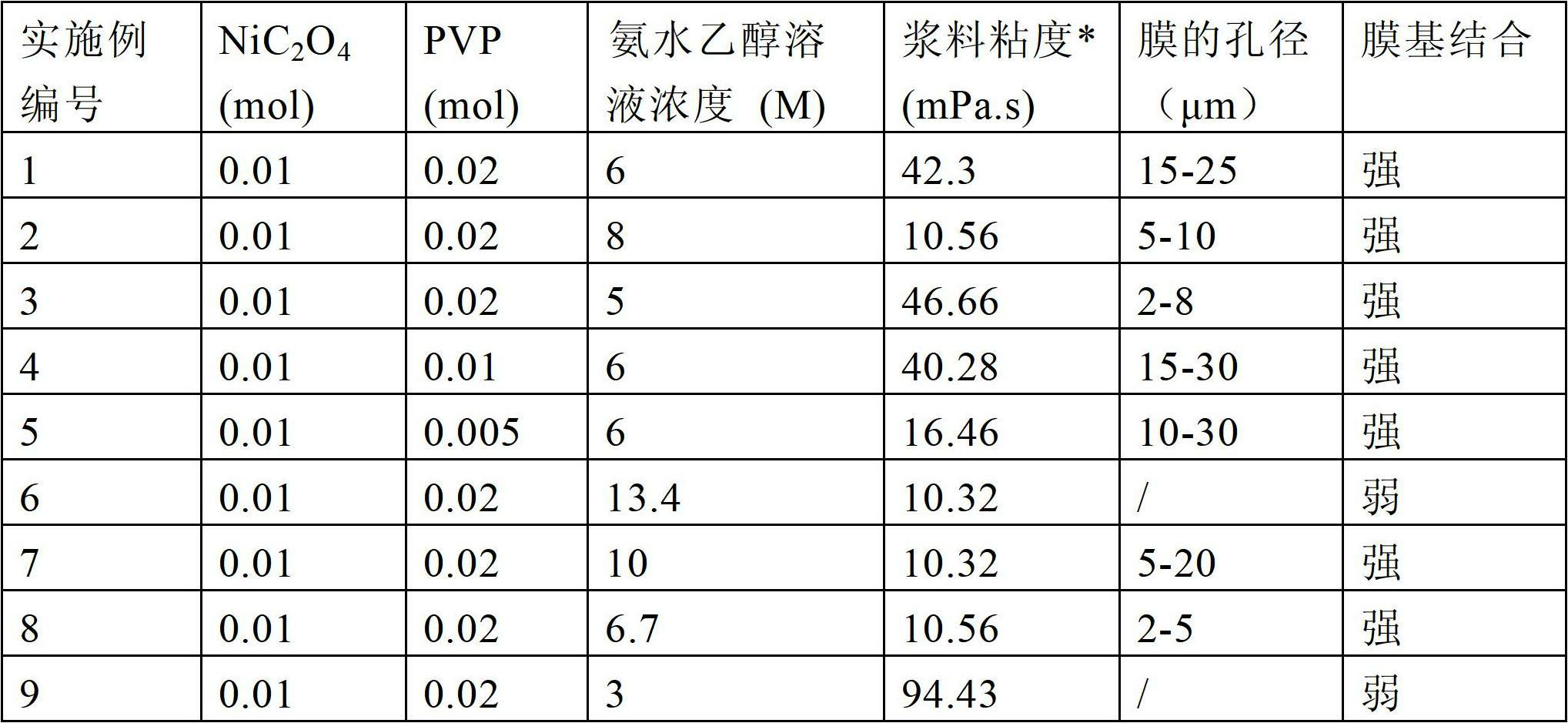Metal/carbon nano composite porous membrane and preparation method thereof
A carbon nanocomposite, porous membrane technology, applied in the field of porous membranes
- Summary
- Abstract
- Description
- Claims
- Application Information
AI Technical Summary
Problems solved by technology
Method used
Image
Examples
Embodiment 1
[0052] Add 0.01mol nickel oxalate dihydrate and 0.02mol PVP into 6mol / L ammonia water ethanol solution, and keep stirring at room temperature to obtain a uniform blue sol. The sol is continuously stirred to make the sol pregelatinize into a slurry with a certain viscosity. Drop the slurry onto the cleaned alumina surface and dry until the solvent evaporates completely. The sample obtained after drying was heat-treated under the protection of an inert atmosphere at 550° C. for 2 hours to form a porous nickel-carbon film.
[0053] figure 1 It is the X-ray diffraction spectrum of the porous nickel carbon film in this example. figure 1 The three sharp diffraction peaks (44.5°, 51.8° and 76.4°) indicated by the solid diamonds in the center correspond to metallic nickel (Standard Card Library No.: 04-0850), and the one broad peak indicated by the open circles corresponds to graphitic carbon (Standard Card library number: 41-1487).
[0054] figure 2 It is a scanning electron mi...
Embodiment 2
[0057] Add 0.01mol nickel oxalate dihydrate and 0.02mol PVP into 8mol / L ammonia water ethanol solution, and keep stirring at room temperature to obtain a uniform blue sol. The sol is continuously stirred to make the sol pregelatinize into a slurry with a certain viscosity.
[0058] All the other contents are the same as those described in Example 1.
[0059] The membrane-substrate bonding degree and pore size distribution of the porous nickel-carbon membrane obtained in this example are shown in Table 1 below.
[0060] It can be seen from the data in Table 1 that the porous membrane has a strong bond with alumina, but the average pore size is smaller than that of Example 1.
Embodiment 3
[0062] Add 0.01mol nickel oxalate dihydrate and 0.02mol PVP into 5mol / L ammonia water ethanol solution, and keep stirring at room temperature to obtain a uniform blue sol. The sol is continuously stirred to make the sol pregelatinize into a slurry with a certain viscosity.
[0063] All the other contents are the same as those described in Example 1.
[0064] The membrane-substrate bonding degree and pore size distribution of the porous nickel-carbon membrane obtained in this example are shown in Table 1 below.
[0065] It can be seen from the data in Table 1 that the porous membrane has a strong bond with alumina, but the average pore size is also smaller than that of Example 1.
PUM
| Property | Measurement | Unit |
|---|---|---|
| pore size | aaaaa | aaaaa |
| thickness | aaaaa | aaaaa |
| pore size distribution | aaaaa | aaaaa |
Abstract
Description
Claims
Application Information
 Login to View More
Login to View More - R&D
- Intellectual Property
- Life Sciences
- Materials
- Tech Scout
- Unparalleled Data Quality
- Higher Quality Content
- 60% Fewer Hallucinations
Browse by: Latest US Patents, China's latest patents, Technical Efficacy Thesaurus, Application Domain, Technology Topic, Popular Technical Reports.
© 2025 PatSnap. All rights reserved.Legal|Privacy policy|Modern Slavery Act Transparency Statement|Sitemap|About US| Contact US: help@patsnap.com



